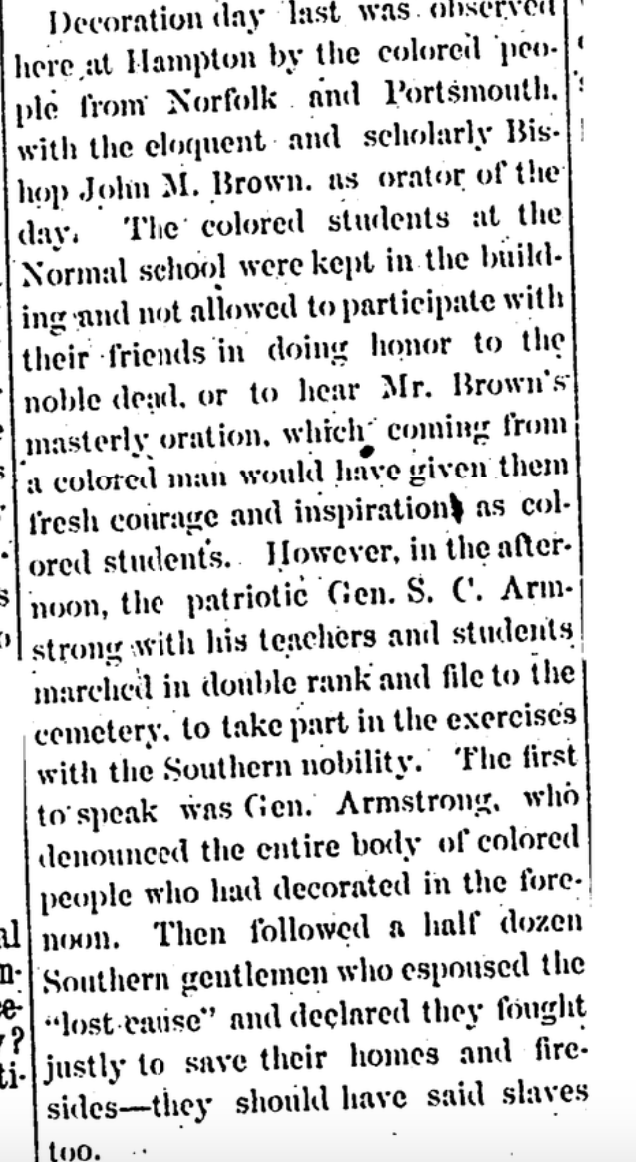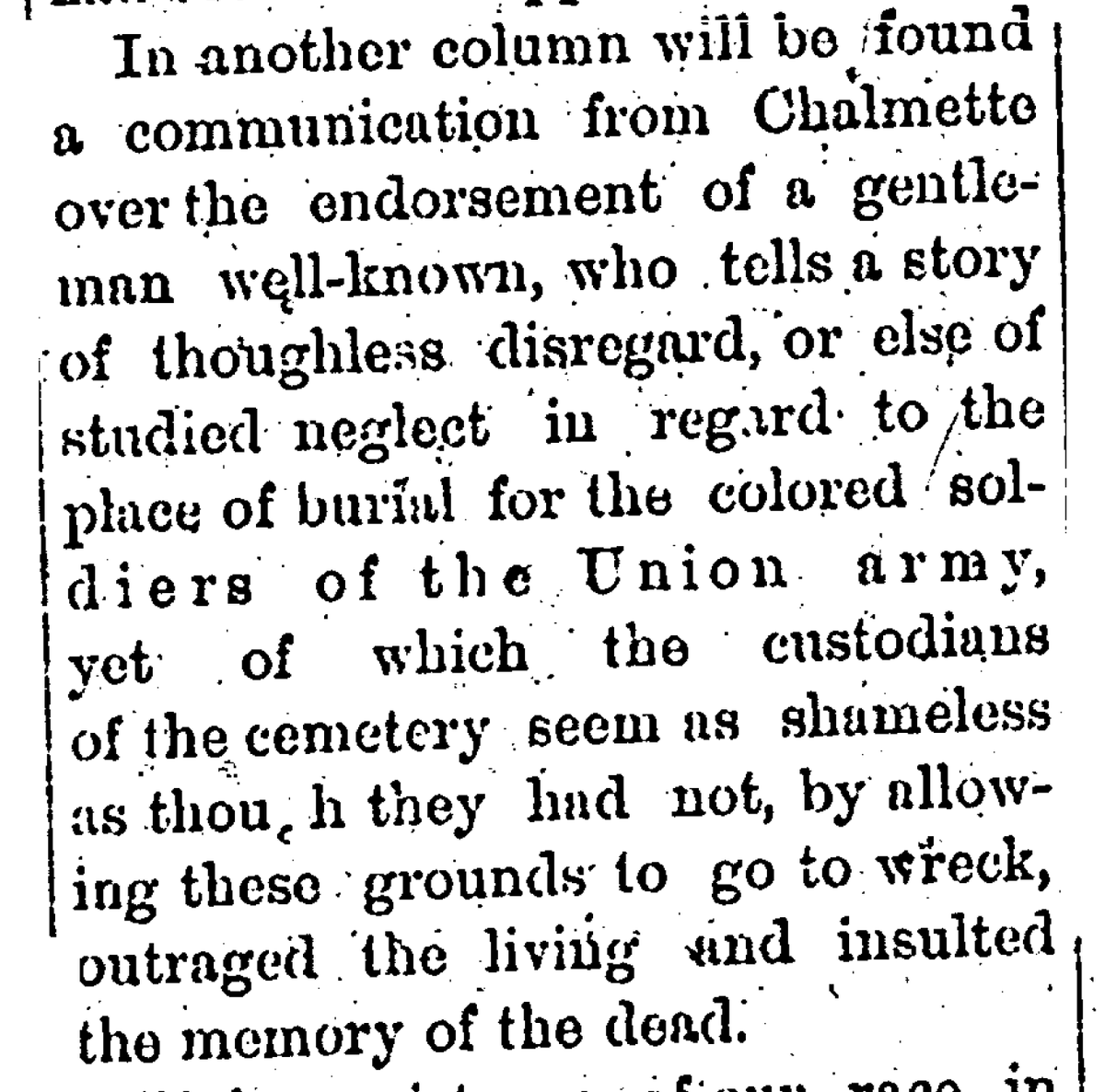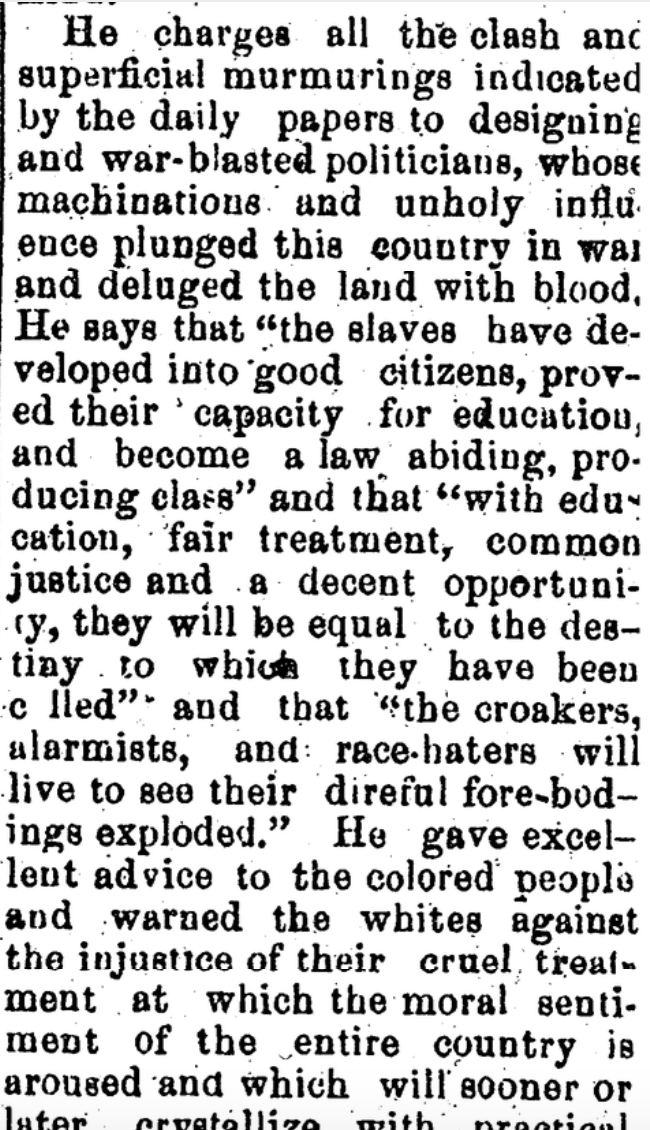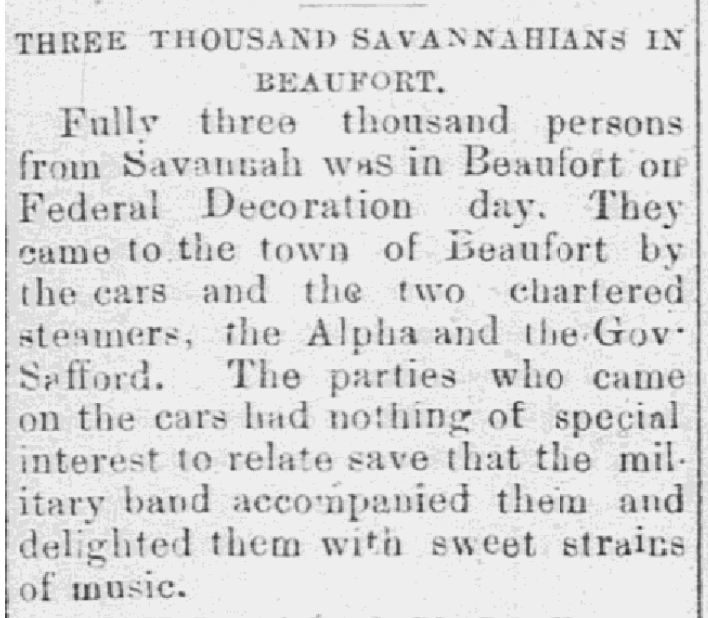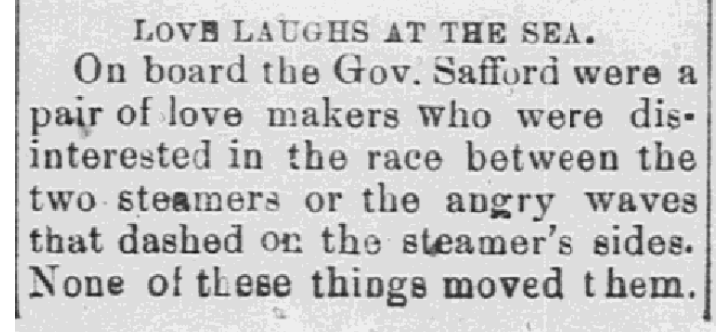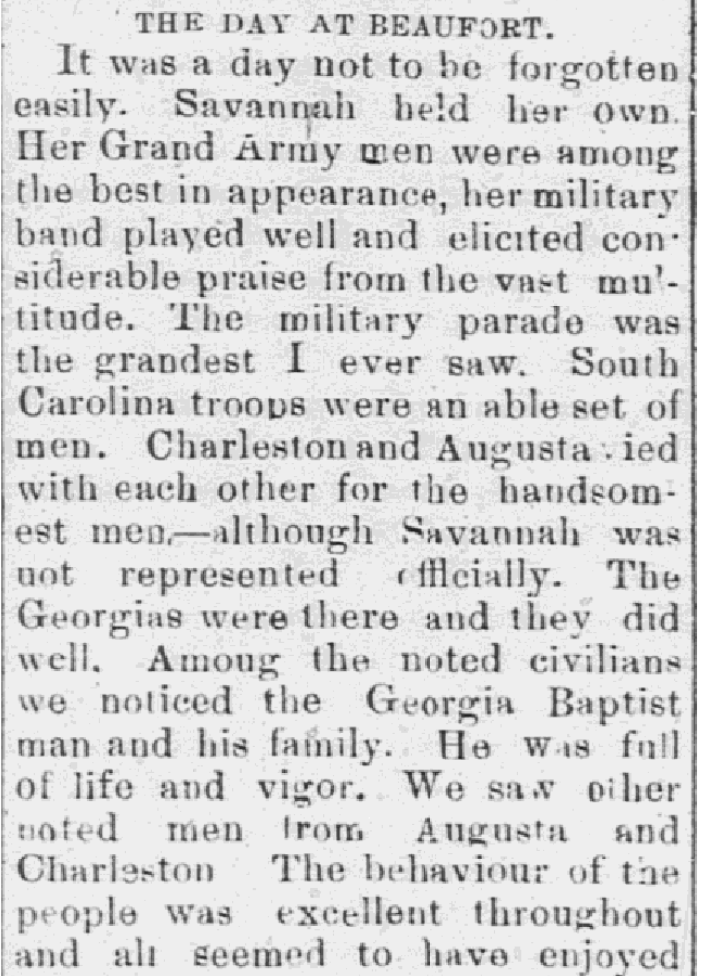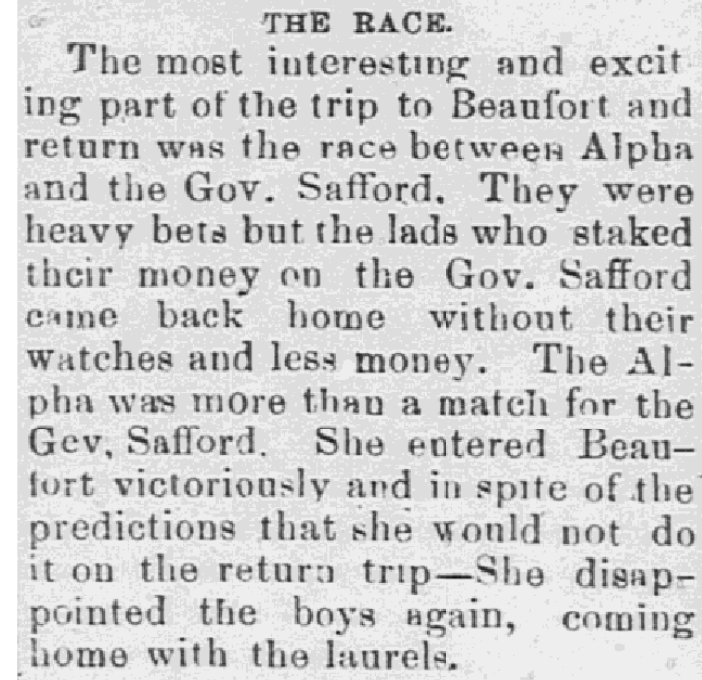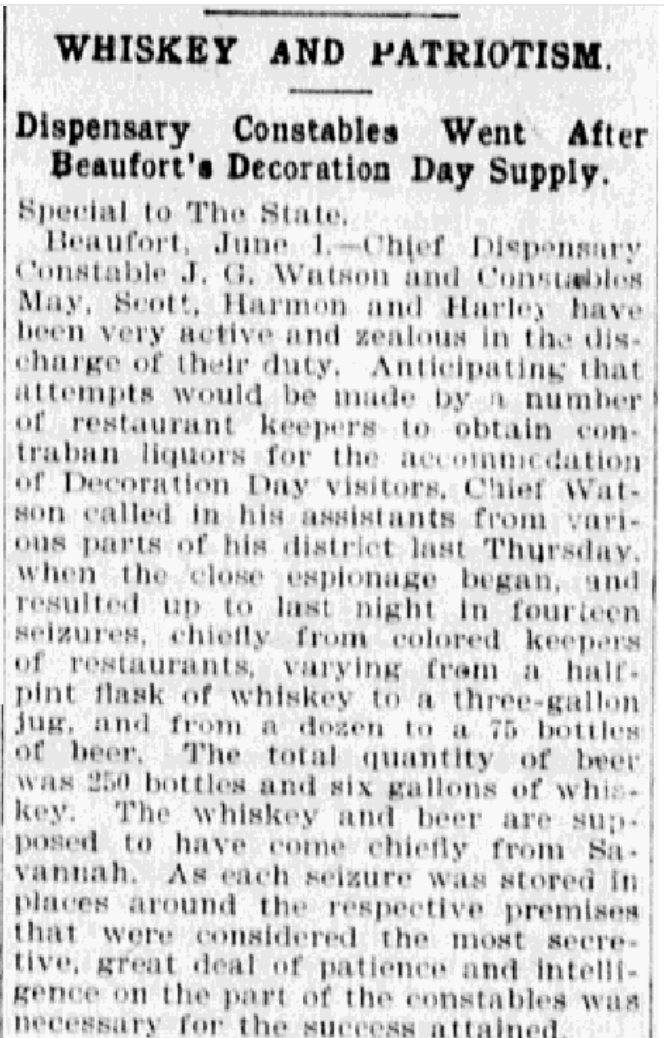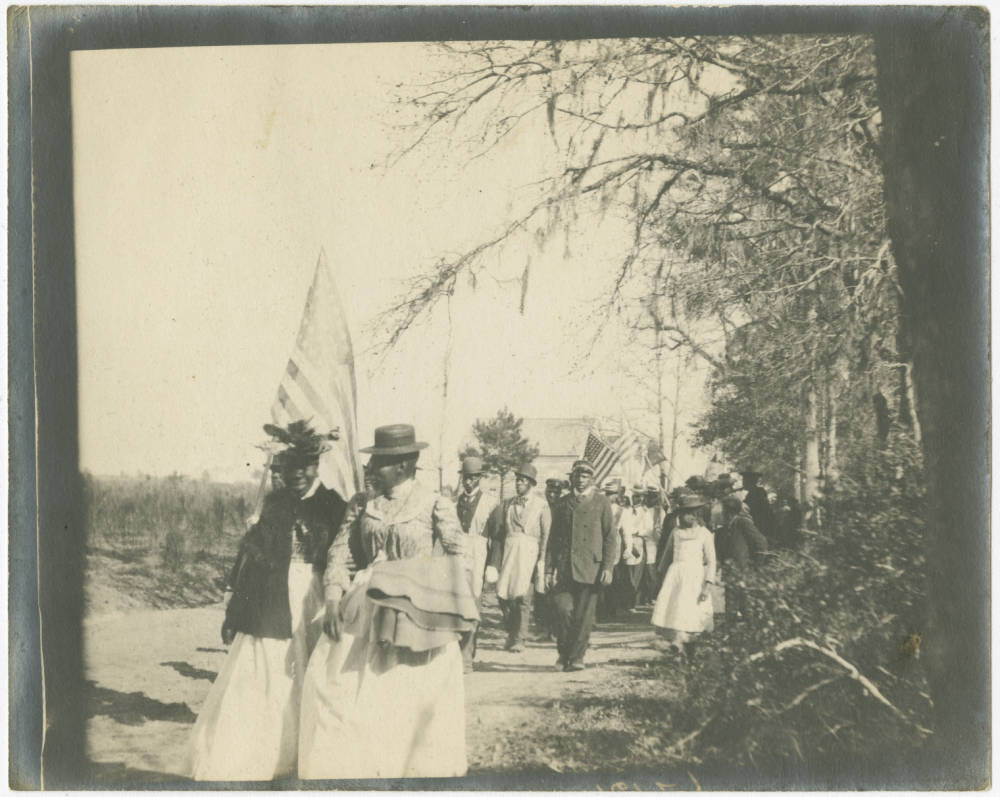What we now know as Memorial Day had earlier roots in a nineteenth-century celebration known as Decoration Day. Historian William Blair notes that the celebration had its official beginning in 1868 as an event celebrated by Civil War veterans in the Grand Army of the Republic.
While the occasion of laying flowers on grave sites was traditionally solemn, it often took on a charged political tone in the South, where federal cemeteries were perceived as "occupied territory" by white southerners.
For example, in an 1876 celebration that took place in Tidewater Virginia, Samuel Chapman Armstrong, then President of the Hampton Institute, prevented Hampton students from participating in a black celebration and instead required students to attend a "lost cause" celebration
In Louisiana, black leaders called Decoration Day a "farce" because the graves of black soldiers were not being decorated and it appeared that the contributions African American soldiers had made to the Union Cause was being deliberately forgotten
The politics of Decoration Day were most visible in Beaufort, South Carolina. A stronghold of the Republican Party, black political power, and a number of GAR lodges, Beaufort turned Decoration Day into a region-wide celebration of unionism, emancipation, and political theater
In 1890, Ellery Brayton, a white Republican who was seeking to represent the Lowcountry& #39;s "black district" in Congress, offered a blistering account of what the Civil War and Reconstruction meant and demanded the federal government protect black civil and voting rights
More than electoral politics, Decoration Day in Beaufort offered African Americans an opportunity to build community and seek pleasure at the nadir of antiblackness in the United States.
A black writer from neighboring Savannah highlighted that at its core Decoration Day was a community event. Lovers could lock eyes, gamblers could lay action on a boat race, soldiers would parade; and, if you weren& #39;t careful, you could be relieved of your wallet
By the early twentieth century, Decoration Day in Beaufort could receive anywhere from 10,000 to 20,000 visitors. With the Republican Party out of power and disenfranchisement enacted by a new state constitution, the presence of thousands of black visitors faced heavier policing
For example, in 1902 local constables sought to crack down on alcohol being sold by black entrepreneurs who were in violation of the state dispensary law, which gave South Carolina& #39;s state government a monopoly on all alcohol sales.
In 1908, Booker T. Washington gave the keynote address at Beaufort County& #39;s Decoration Day. By far the most famous black person in the United States, the David Hunter Post, Beaufort& #39;s local branch of the GAR had been trying to invite Washington for 5 years
Far from emphasizing the radical roots of the holiday, Washington told the audience to "look after their opportunities and duties as workers," and "not ask for social equality."
As Bruce Baker has noted, by World War I, local white leaders began to take greater control of Beaufort& #39;s Decoration Day. By the 1920s, the name "Memorial Day" had started to become more prominent. Black attendance dipped. At one event, leaders from the UDC gave remarks.
Still, the history of Decoration Day is quite remarkable and reflects an important and often forgotten story of how ordinary black Americans conceptualized the legacy of the Civil War and what it meant to honor those who gave the greatest sacrifice for this nation& #39;s ideals

 Read on Twitter
Read on Twitter